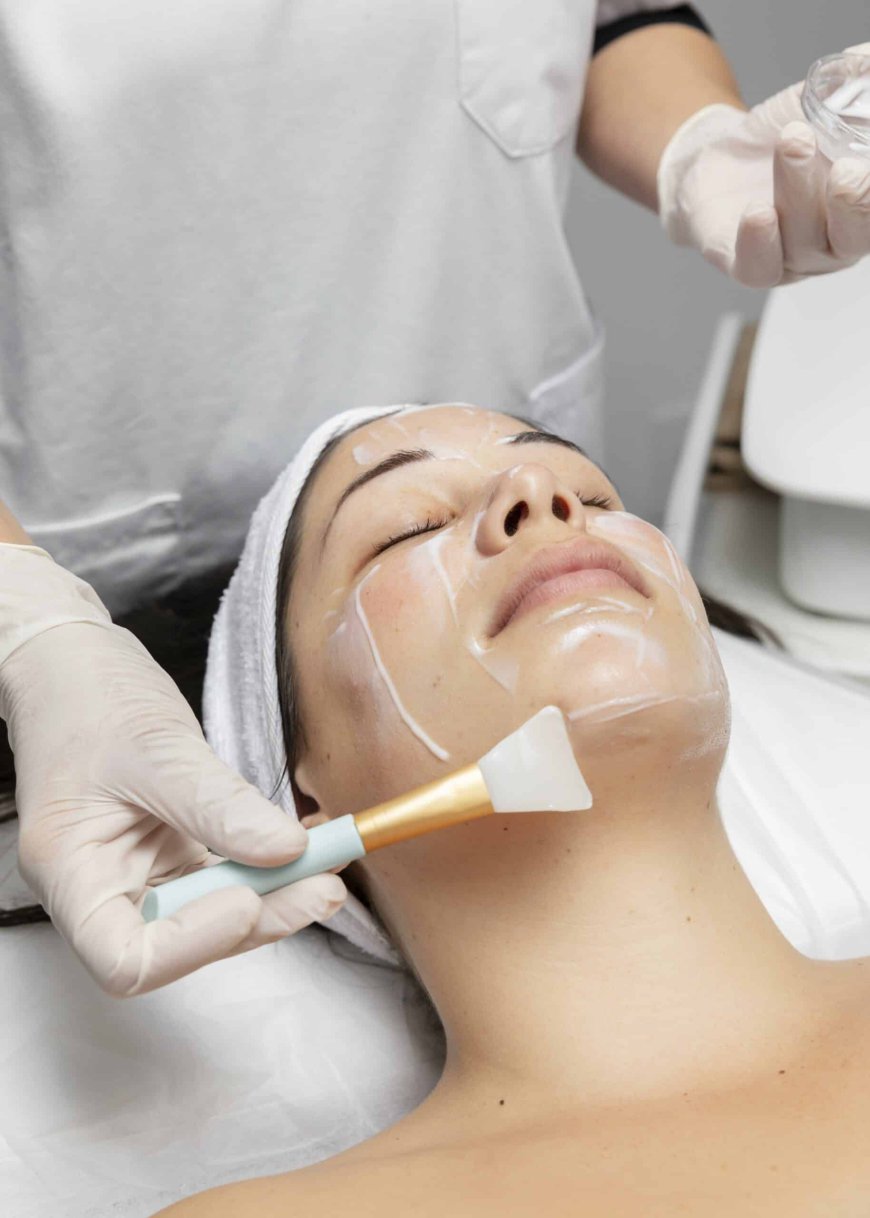Chemical Peels: Your Go-To Treatment for Glowing Skin
Wipe away your bothersome skin concerns by having a look on our chemical peels in Dubai! Visit us and get it right away!

In the quest for radiant, youthful skin, many individuals turn to various skincare treatments. Among these, chemical peels have emerged as a highly effective option for enhancing skin texture and appearance. This article delves into the world of chemical peels, exploring their types, procedures, and post-treatment care, making them a popular choice for achieving glowing skin.
Understanding Chemical Peels
Chemical Peels in Dubai are dermatological treatments that involve applying a chemical solution to the skin to exfoliate and promote cell turnover. The primary goal of a chemical peel is to remove the outermost layers of dead skin cells, revealing a fresher, healthier complexion underneath. The solutions used in chemical peels can vary in strength, ranging from mild to deep peels, making it important for individuals to choose the right type based on their skin concerns and goals.
Types of Chemical Peels
There are three main types of chemical peels, each designed to address different skin issues:
1. Superficial Peels
Superficial peels, often made with alpha hydroxy acids (AHAs) or beta hydroxy acids (BHAs), are the mildest form of chemical peels. These peels penetrate only the outer layer of the skin, making them suitable for individuals with minor skin concerns such as dryness, uneven texture, and mild sun damage. Superficial peels are often recommended for beginners, as they require minimal downtime and can be performed in a doctor's office or spa.
2. Medium Peels
Medium peels typically utilize trichloroacetic acid (TCA) to target deeper layers of the skin. These peels are effective in addressing more pronounced issues, including moderate sun damage, fine lines, and acne scars. Unlike superficial peels, medium peels may require a few days of recovery time, as the skin may become red and flaky as it heals. However, the results are often more significant, leading to improved skin tone and texture.
3. Deep Peels
Deep peels are the strongest type of chemical peel, often performed with phenol or a higher concentration of TCA. They are designed to treat severe skin concerns, such as deep wrinkles, significant sun damage, and even precancerous growths. Deep peels require a longer recovery time and are typically performed under sedation. Due to their intensity, it is crucial for individuals to have a thorough consultation with a dermatologist before undergoing a deep peel.
The Chemical Peel Procedure
The procedure for a chemical peel is relatively straightforward, but it is essential to seek the guidance of a qualified professional. Here's what to expect during the process:
-
Consultation: Before undergoing a chemical peel, a consultation with a dermatologist or licensed skincare professional is essential. During this meeting, the practitioner will assess your skin type, discuss your concerns, and recommend the most suitable type of peel for you.
-
Preparation: Prior to the peel, the skin may be prepared using a gentle cleanser. In some cases, a topical numbing cream may be applied, especially for medium or deep peels, to minimize discomfort.
-
Application: The chemical solution is applied to the skin using a brush or cotton pad. Depending on the type of peel, the solution may be left on the skin for a few minutes to several hours. The practitioner will monitor the skin closely during this time.
-
Neutralization and Removal: After the designated time, the solution is neutralized (if applicable) and removed from the skin. Post-peel, soothing creams or masks may be applied to help calm any irritation.
-
Post-Care Instructions: Following the peel, patients will receive specific post-care instructions. This may include guidelines for skincare, sun protection, and any necessary follow-up appointments.
Post-Peel Care for Glowing Skin
After a chemical peel, proper aftercare is vital for ensuring the best results. Here are some key post-peel care tips:
-
Sun Protection: The skin is more sensitive to sunlight after a chemical peel, making it crucial to apply broad-spectrum sunscreen daily. Avoid direct sun exposure, especially during the initial healing phase.
-
Gentle Skincare: Stick to gentle, non-irritating cleansers and moisturizers for at least a week following the peel. Avoid harsh scrubs, exfoliants, and products containing retinoids or acids during this period.
-
Hydration: Keeping the skin well-hydrated is essential for promoting healing. Use a nourishing moisturizer to support the skin's recovery process.
-
Avoid Picking or Scratching: As the skin peels and flakes, resist the temptation to pick at it. Allow the skin to shed naturally to prevent scarring and irritation.
-
Follow-Up Appointments: Schedule follow-up visits with your dermatologist to monitor your skin's progress and discuss any additional treatments that may be beneficial.
Conclusion
Chemical peels are a powerful tool in the skincare arsenal, offering a pathway to rejuvenated, glowing skin. With various types of peels available, individuals can choose the right treatment for their specific needs and skin concerns. By understanding the procedure and committing to post-peel care, anyone can enjoy the remarkable benefits of chemical peels and unveil a brighter, more radiant complexion. Whether you're dealing with fine lines, sun damage, or uneven skin tone, chemical peels may be the key to achieving the luminous skin you've always desired.
